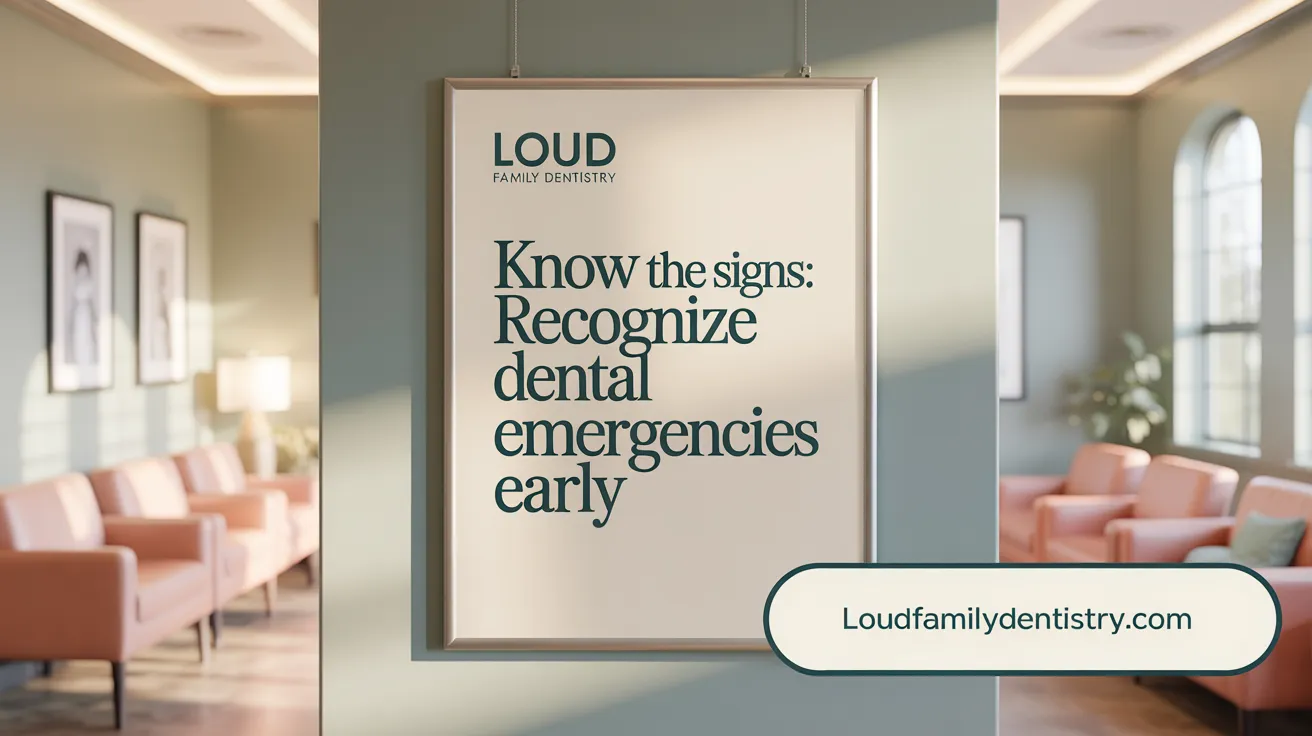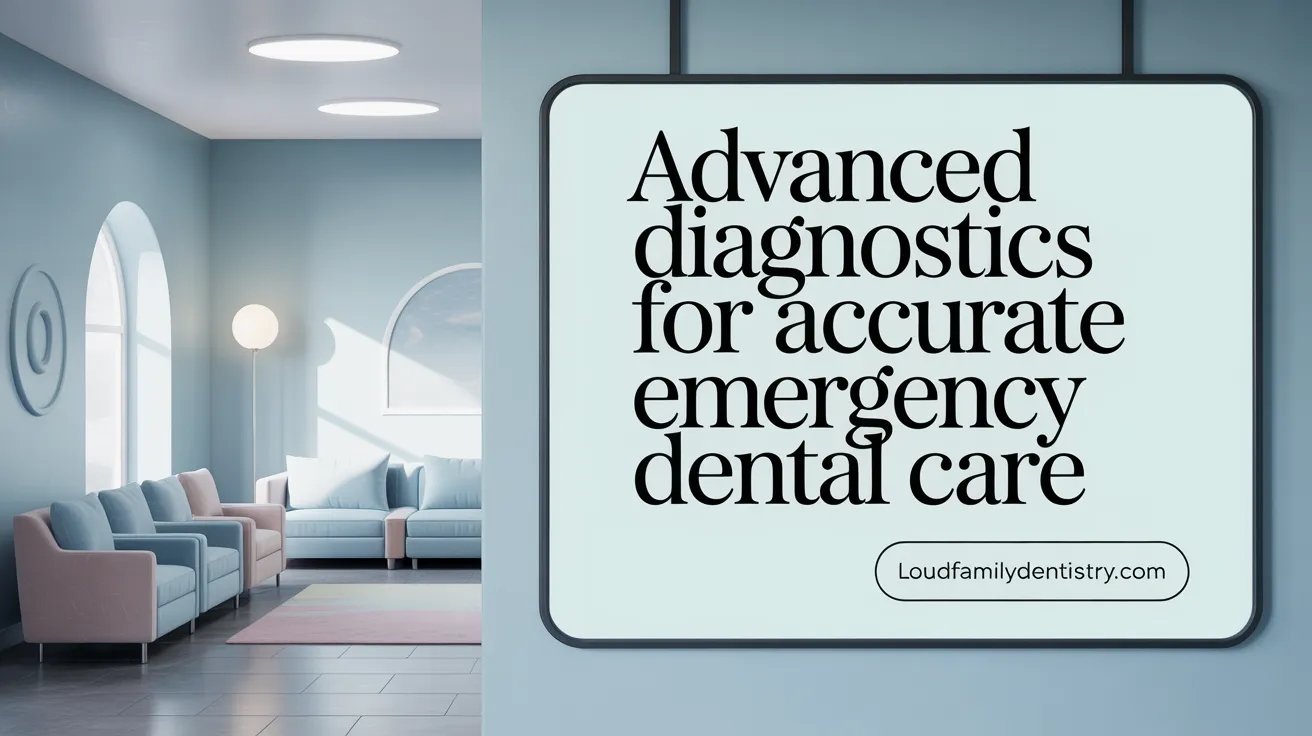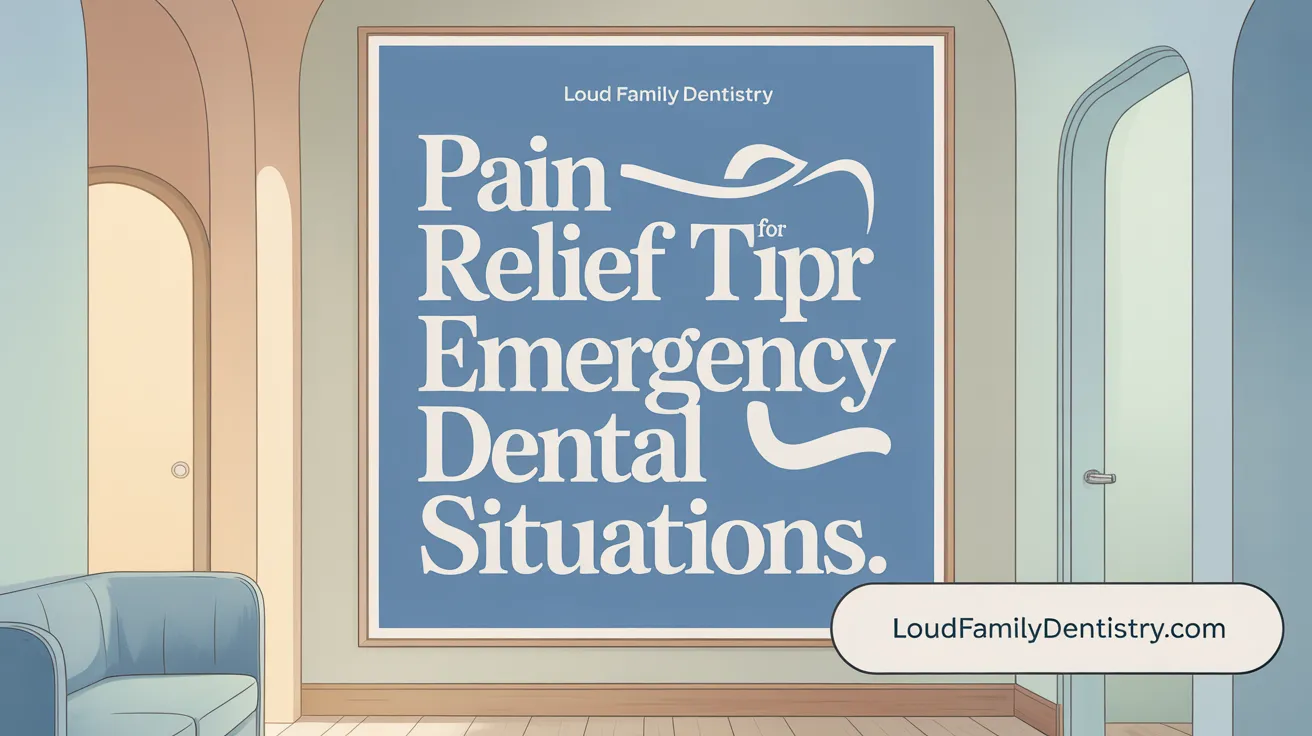Introduction to Emergency Dental Care
Purpose and Importance of Emergency Dental Visits
Emergency dental care plays a crucial role in managing unexpected oral health issues that require immediate attention. These visits aim to alleviate severe pain, prevent infection, and save teeth from further damage. Prompt treatment can reduce the risk of complications and improve overall outcomes.
When to Consider an Emergency Dental Visit
You should consider an emergency dental visit if you experience severe tooth pain, a knocked-out or broken tooth, uncontrolled bleeding, swelling, or signs of infection such as fever or pus. Acting quickly can prevent worsening conditions and help restore oral health effectively.
Recognizing a Dental Emergency

What counts as a dental emergency?
A dental emergency includes several urgent situations that require immediate attention. These emergencies can include severe toothaches that disrupt daily life, teeth that have been knocked out due to trauma, and broken or chipped teeth that may expose the sensitive inner layers of the tooth. Additionally, losing fillings or crowns unexpectedly can cause discomfort and sensitivity. Serious oral bleeding after an injury and infections manifested through swelling or fever also qualify as dental emergencies.
Types of dental emergencies
Common types of dental emergencies encompass:
- Severe toothache or pain
- Knocked-out (avulsed) teeth
- Broken, cracked, or chipped teeth
- Lost fillings or crowns
- Significant oral bleeding
- Infections causing swelling or fever
When should I seek emergency dental care?
Immediate dental care is crucial if you experience intense pain that doesn't subside, significant bleeding from the mouth, trauma resulting in damage to your teeth or gums, or signs of an infection such as swelling and fever. Prompt treatment helps prevent complications and increases the chances of saving the affected tooth.
By recognizing the symptoms and understanding when to seek emergency care, you can protect your oral health and avoid worsening problems. For support and treatment, consider visiting community-oriented dental clinics that focus on timely and compassionate care for dental emergencies.
Initial Steps During an Emergency Visit

What should I expect when I arrive for an emergency dental visit?
When you arrive at the dental clinic for an emergency, the staff will first prioritize your case according to the severity of your problem. This ensures that patients who need immediate attention receive care promptly.
Emergency triage and assessment
After the initial prioritization, the dental team conducts a rapid assessment. This involves examining your symptoms and pain level to determine how urgent your situation is and what kind of treatment is necessary. This quick evaluation helps guide the dentist in making decisions about diagnosis and immediate interventions.
Patient information and medical history collection
Simultaneously, the staff will collect your medical and dental history. It is important to provide accurate information regarding any current medications, allergies, or ongoing health conditions. This information helps the dentist tailor treatment safely and effectively during your emergency visit. For care tailored to the community, many community-oriented dental clinics prioritize understanding patient history in their approach.
Diagnostic Procedures in Emergency Dental Care

How do dentists diagnose the problem during an emergency visit?
During an emergency dental visit, dentists begin by conducting a thorough physical examination of the affected area. This involves assessing the location and severity of pain, checking for visible damage such as broken or chipped teeth, swelling, and signs of infection. Dentists also review the patient's medical and dental history to understand any pre-existing conditions that might influence diagnosis.
Examination techniques
Dentists use various examination techniques during emergencies, including palpation (feeling the area), percussion (tapping on teeth to check sensitivity), and mobility tests to determine if the teeth are loose or displaced. These techniques help to quickly identify issues such as fractures, dislocations, or abscesses.
Use of X-rays and other diagnostic tools during emergencies
In addition to physical examination, dental X-rays are crucial for emergency diagnostics. They allow dentists to see beyond what is visible to the naked eye, revealing hidden fractures, tooth root damage, or infections in the bone. Other imaging technologies like cone beam computed tomography (CBCT) in dentistry may also be utilized in complex cases for a detailed 3D view.
These combined diagnostic methods enable dentists to accurately identify the cause of the problem and plan appropriate treatment efficiently, ensuring the best possible outcome during a dental emergency.
Common Emergency Treatments Provided

What kind of treatments are typically given during an emergency dental visit?
When you visit the dentist for an emergency, the focus is on providing immediate relief and preventing further damage. Common treatments include pain control by prescribing or administering medications such as analgesics or local anesthesia. Dentists may clean and dress wounds inside the mouth to promote healing and reduce infection risk.
Temporary restorations are frequently used to protect damaged teeth. This can involve placing temporary fillings or crowns to cover fractures or decay until a permanent treatment is possible. In cases of trauma, fractured or loose teeth may be stabilized through splinting, which involves securing the tooth to neighboring teeth.
If there are signs of infection, draining abscesses is a priority, sometimes alongside prescribing antibiotics to fight bacterial spread. Managing trauma effectively often combines these interventions to restore function and comfort quickly while planning for long-term dental care.
These treatments ensure that pain is managed and complications are minimized. Emergency dental care prioritizes rapid, practical solutions tailored to each patient’s needs, often provided by community-oriented dental clinics.
| Treatment Type | Purpose | Common Procedures |
|---|---|---|
| Pain Relief | Alleviate discomfort | Medications, local anesthesia |
| Temporary Restorations | Protect damaged teeth | Temporary fillings, crowns |
| Infection Treatment | Control infection spread | Draining abscesses, antibiotics |
| Trauma Management | Stabilize injured teeth | Cleaning wounds, splinting loose teeth |
Managing Pain and Discomfort

How is pain managed during an emergency dental visit?
Pain management is a crucial aspect of emergency dental care to ensure patient comfort and effective treatment. Typically, clinicians use a combination of local anesthesia to numb the treatment area, analgesics to control pain, and anti-inflammatory medications to reduce swelling and discomfort.
Local anesthesia is administered directly to the site requiring intervention, which allows patients to undergo procedures without feeling pain in the affected region. This is essential during procedures like tooth extractions or deep cleaning.
Analgesics, such as over-the-counter pain relievers or stronger prescription medications, are used based on the severity of the pain and patient needs. Anti-inflammatory drugs help minimize the tissue swelling that can exacerbate discomfort.
Dentists customize the pain management approach taking into account the type of emergency, the intensity of the pain, and the patient's medical history and allergies. This tailored strategy ensures that patients receive optimal relief with minimal side effects.
By combining these methods, dentists at community-oriented dental clinics can efficiently manage pain and make emergency visits more tolerable, ultimately facilitating faster and more effective healing.
Aftercare Following an Emergency Dental Visit
What should I do after my emergency dental treatment?
After your emergency dental visit, it’s important to follow home care instructions provided by your dentist carefully. These may include avoiding hard, crunchy, or hot foods that could irritate the affected area. Keeping the mouth clean is essential, but be gentle to prevent aggravating the injury or procedure site. Many community-oriented dental clinics emphasize personalized guidance to support this recovery phase.
Home care instructions
Maintain a soft diet and avoid chewing on the side of your mouth where treatment was performed. Rinse your mouth gently with warm salt water several times a day to promote healing and reduce bacteria, but avoid vigorous rinsing. Practice good oral hygiene as advised, using a soft-bristle toothbrush and flossing carefully around the treated area. At community-oriented dental clinics, patient education on these practices is a key part of care.
Medications and follow-up appointments
Take all prescribed medications exactly as directed, including pain relievers and antibiotics, if given. Antibiotics help prevent infection while pain medications improve comfort during recovery. Scheduling and attending follow-up appointments allows your dentist to monitor healing progress and address any ongoing concerns promptly. Providers such as Loud Family Dental are known for supporting patients with comprehensive follow-up care.
Signs of complications to watch for
Be alert for signs such as excessive swelling, persistent or worsening pain, bleeding that does not stop, fever, or any unusual discharge at the treatment site. These symptoms could indicate infection or other complications that need immediate dental evaluation. Some community-oriented dental clinics provide community-focused care to reduce stress related to these concerns. Additionally, advanced imaging like cone beam computed tomography (CBCT) in dentistry can be utilized for accurate assessment if complications arise.
By adhering to these guidelines, you can support your recovery and help ensure the best possible outcome following your emergency dental care.
How to Prepare for a Possible Emergency Dental Visit
How can I prepare for a potential emergency dental visit?
Being ready for a dental emergency can make the situation less stressful and help you get prompt care. Here are some practical steps to prepare:
-
Keep dental records accessible: Have recent dental records, including X-rays and treatment history, stored in an easily reachable place. This information helps your dentist understand your dental health background and provide effective emergency care.
-
Emergency contacts and clinic information: Save the contact details of your preferred emergency dental clinic and your dentist’s after-hours line in your phone or a physical wallet card. This ensures immediate access to professional help when needed.
-
Insurance and payment preparation: Update your dental insurance information and have your payment methods ready. Knowing your coverage and having payment options at hand will streamline the check-in process during an emergency.
Taking these simple preparations ensures you can handle unexpected dental issues with confidence and speed, improving the outcomes of emergency treatment. For families and individuals seeking care, Loud Family Dental offers comprehensive services to fit your needs. Community support is key, and many community-oriented dental clinics provide accessible emergency dental care to help reduce stress during urgent visits. For advanced diagnostics during emergencies, technologies like cone beam computed tomography (CBCT) in dentistry are revolutionizing treatment planning and outcomes.
Costs and Insurance Coverage for Emergency Dental Care
What are the costs related to emergency dental visits?
Emergency dental care expenses can vary widely depending on the treatment needed. Basic emergency examinations typically cost between $50 and $200. More involved procedures such as tooth extractions or root canals can range from $150 to over $1,000. Additional costs may arise from prescribed medications or necessary follow-up visits.
Insurance policies and considerations
Many dental insurance plans include some level of emergency coverage, often covering the initial examination and basic treatments. However, extensive procedures during an emergency, especially involving surgery or complex restorations, may have limited coverage or higher out-of-pocket costs. Patients should review their insurance policy details or consult with their dental provider to understand applicable benefits. Providers like Loud Family Dental often assist patients in navigating these insurance considerations.
Tips for managing expenses
To manage emergency dental expenses effectively, individuals can take several steps:
- Confirm coverage specifics with their insurance provider before or immediately after the emergency.
- Request an estimate for procedures upfront.
- Consider dental savings plans as an alternative to traditional insurance.
- Maintain routine dental care to reduce the likelihood of costly emergencies with support from community-oriented dental clinics designed to promote preventive care.
- Use flexible spending accounts (FSAs) or health savings accounts (HSAs) to cover unexpected dental costs.
Understanding the typical cost ranges, insurance coverage details, and practical ways to manage expenses can help patients be better prepared for emergency dental situations.
Role of Community-Oriented Clinics in Emergency Dental Care
How do community dental clinics support emergency dental care?
Community dental clinics play a vital role in providing accessible and timely emergency dental services. These clinics prioritize patient comfort and professional care, which helps address urgent dental issues quickly and effectively. They serve patients of all ages, ensuring that families within the local area have access to necessary emergency treatments without delay.
Benefits of local dental clinics in emergencies
Local dental clinics offer several advantages during dental emergencies. Because they are located within the community, patients can reach them quickly, reducing wait times and the severity of dental problems. They often have flexible hours or walk-in options to accommodate unexpected dental emergencies. Furthermore, these clinics tend to have a compassionate approach tailored to relieve pain and anxiety, creating a supportive environment during stressful dental situations.
How Loud Family Dental supports community dental emergencies
Loud Family Dental exemplifies community-oriented dental clinics care by providing emergency dental services that are accessible and patient-focused. Their professional team is trained to handle a broad range of dental emergencies, from severe toothaches to broken teeth. By offering timely care and comprehensive support, Loud Family Dental helps patients avoid complications and restores oral health in urgent situations. Their dedication to the local community ensures that emergency dental care remains within easy reach for everyone they serve.
Tips for Preventing Dental Emergencies
How can dental emergencies be prevented?
Dental emergencies can often be avoided by adopting a few simple habits and precautions. Maintaining good oral hygiene is essential; regular brushing and flossing help keep your teeth and gums healthy, reducing the risk of issues like tooth decay and gum disease that may lead to emergencies.
Avoiding risky behaviors is another important step. This includes not chewing on hard objects such as ice or pens, which can cause cracks or breaks in your teeth. Additionally, wearing protective gear like mouthguards during sports or physical activities can significantly reduce the chance of injury.
Recognizing early warning signs such as persistent tooth pain, swelling, or sensitivity allows you to seek prompt dental care before a situation worsens. Early detection can prevent simple problems from escalating into emergencies.
Regular dental visits play a crucial role in prevention. These appointments allow your dentist to monitor your oral health, perform professional cleanings, and catch potential issues early, helping you avoid urgent dental problems. For families seeking comprehensive care, Loud Family Dental offers a welcoming environment and skilled professionals. Additionally, community-oriented dental clinics play a vital role in promoting preventive care and supporting patients in maintaining oral health.
Conclusion and Encouragement for Prompt Dental Attention
Understanding the Emergency Dental Visit Process
When a dental emergency arises, the first step is to contact your dental provider promptly. During your visit, the dentist will assess the situation, provide immediate relief, and outline the necessary treatment plan. Prompt care can prevent complications and improve outcomes.
Why Quick Response Matters
Acting quickly during dental emergencies helps reduce pain and infection risk. Conditions like knocked-out teeth, severe toothaches, or injuries require immediate attention to save teeth and preserve oral health.
Encouraging Immediate Professional Care
If you experience a dental emergency, don’t delay seeking professional care. Early intervention by a dental professional ensures proper treatment and helps avoid more extensive, costly procedures in the future. Your dentist is your ally for oral health, ready to assist whenever urgent care is needed.
Taking prompt action empowers you to protect your smile and maintain overall well-being.
